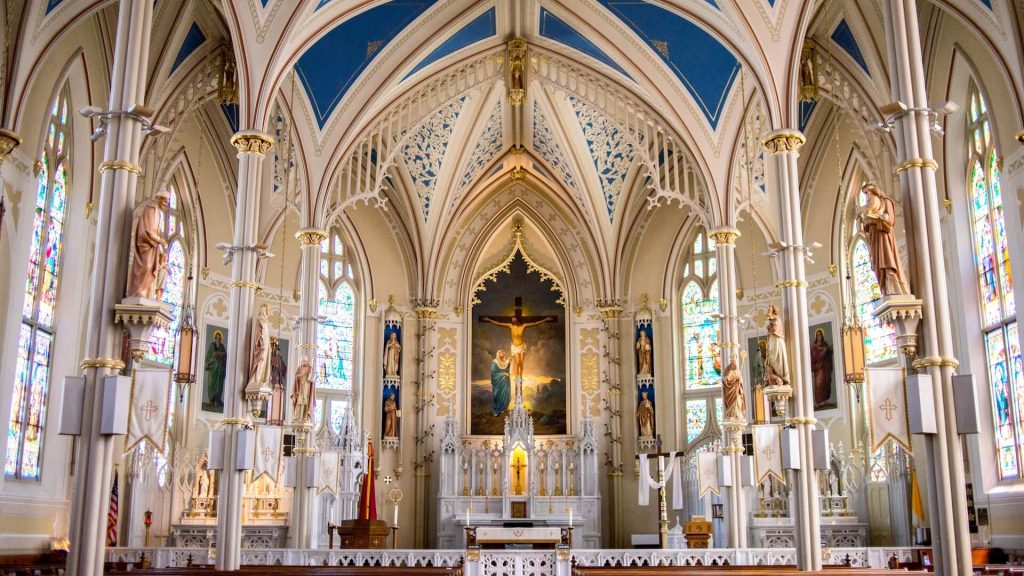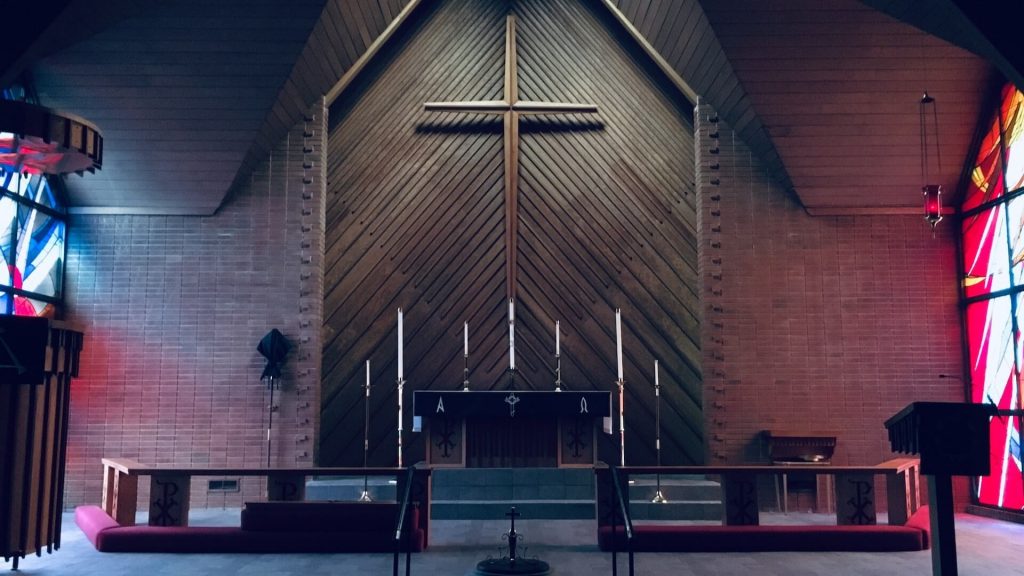Catholic churches are not just buildings; they are living embodiments of faith, history, and artistry. Their architectural grandeur goes far beyond mere aesthetics, encompassing a profound purpose that resonates with the divine. In this comprehensive exploration, we will embark on a journey through the intricate and deeply symbolic world of church architecture and its unparalleled role in shaping the spiritual experiences of the faithful.
Catholic church architecture is a remarkable testament to human creativity and devotion, where every stone, stained glass window, and sculpted figure carries a profound message. These sacred spaces serve as portals to the divine, fostering an environment where worshippers can transcend the constraints of time and space. To fully understand the essence of church architecture, we must delve into its components, from the orientation of the altar to the interplay of light and sound, to the rich symbolism interwoven into every detail.
The Essence of Church Architecture

Church Architecture
Catholic church architecture transcends superficial aesthetics, serving a profound purpose as a reflection of the divine. These architectural marvels become vessels for worship. The grandeur of a church’s exterior, including intricate stained glass, towering spires, and awe-inspiring sculptures, is rooted in deep theological significance.
Transcending Time and Space
Church architecture creates a sense of timelessness, allowing worshippers to transcend the temporal and enter the eternal. This is achieved through the incorporation of design elements such as pointed arches, high vaulted ceilings, and the extensive use of natural light. These features collectively create an atmosphere conducive to contemplation and prayer, offering a direct connection to the divine.
The Layout of Catholic Churches

Orientation
A central aspect of Catholic church architecture is the precise orientation of the church. In most cases, Catholic churches are constructed so that the altar faces east. This is not a mere tradition but carries profound symbolism. Worshippers gather facing the east, symbolizing the rising of the sun, which in turn signifies the resurrection of Christ and the promise of a new day. The act of orientation itself is an act of faith, an embodiment of the journey from darkness to light and the path to salvation.
The Sanctuary and the Nave
The architectural layout of a Catholic church typically features a sanctuary, separated from the nave (the main body of the church) by an altar rail or steps. The sanctuary is the holiest area of the church, where the Eucharist is celebrated, symbolizing the very presence of Christ. The nave, on the other hand, is where the congregation gathers to participate in the liturgy. This distinction is not just physical but emphasizes the hierarchical relationship between the sacred and the profane. It serves as a guiding principle for worshippers, helping them comprehend and experience their faith in a structured and meaningful way.
Symbolism in Church Architecture

Stained Glass
Stained glass windows are hallmark features of Catholic church architecture. They are not merely decorative; they are educational and inspirational tools. Each piece of stained glass tells a story, often from the Bible or the lives of saints. The intricate and colorful panes act as a medium through which the light passes, adding a mystical quality to the church. This is symbolic of the light of God shining through the darkness of the world. These windows create a sense of the divine presence, inviting worshippers into a world of spiritual reflection.
Statuary and Sculptures
Catholic churches are adorned with a vast array of statues and sculptures, representing saints, angels, and biblical figures. These artistic representations serve a dual purpose. They act as visual aids for prayer and reflection, helping worshippers connect with the spiritual narrative. Simultaneously, they inspire a sense of reverence and devotion, transforming the church into a living and dynamic space where faith comes to life through art. These statues, sculpted with precision and artistry, provide a visual narrative of Catholic beliefs and the lives of saints.
The Role of Acoustics

The Power of Sound
Acoustics often play an underestimated yet profoundly influential role in church architecture. The way sound travels within the church affects the congregation’s experience during liturgical music and the spoken word. Careful design of surfaces and materials ensures that sound carries clearly and resonates in a way that enhances the spiritual ambiance. The echoes and reverberations within the church space add to the overall sensory experience of worship. This auditory aspect, combined with the visual and spatial elements, creates a truly immersive spiritual experience.
Contemporary Innovations

Balancing Tradition and Modernity
While tradition is integral to Catholic church architecture, contemporary designs embrace innovation. Many modern Catholic churches are designed with sustainability in mind, incorporating energy-efficient features and eco-friendly materials. These churches strive to maintain the balance between preserving tradition and addressing the challenges of the present. They incorporate modern technologies while preserving the sacredness of the space. Contemporary innovations, such as energy-efficient lighting and climate control systems, aim to ensure the longevity of these architectural treasures.
Conclusion
In conclusion, the role of church architecture in Catholic worship is a multifaceted tapestry that extends beyond aesthetics. It is a silent yet powerful guide, leading the faithful on a journey to the divine. Every element of Catholic church architecture, from the orientation of the altar to the intricate stained glass windows, serves a purpose – to deepen the connection between the congregation and their faith.
These architectural features, layouts, and symbolism work in perfect harmony to create an atmosphere conducive to reflection, prayer, and spiritual growth. They remind us that in the realm of faith, beauty is not just skin deep; it is an integral part of the sacred experience. As we continue to marvel at the aesthetics of Catholic church architecture, we must also acknowledge the profound role it plays in fostering a deeper connection with the divine. This intricate dance between faith and art is what makes Catholic church architecture a true marvel of human creativity and spirituality, an enduring testament to the enduring pursuit of the divine in the material world.
